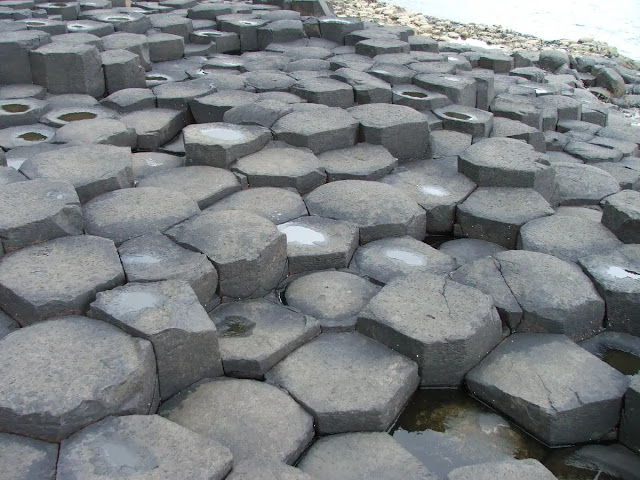Smoky Quartz: The Black Variety of Quartz
Smoky quartz is a brown to gray (near black), transparent to translucent variety of quartz (SiO₂) distinguished by its smoky coloration. The color results from natural irradiation of trace aluminum impurities within the crystal lattice, which creates color centers that absorb specific wavelengths of light. This irradiation typically originates from the surrounding host rock, where radioactive elements emit low-level radiation over geologic time.
Belonging to the tectosilicate group, smoky quartz crystallizes in the hexagonal crystal system and commonly forms six-sided prisms with pyramidal terminations, characteristic of quartz. Its color ranges from pale brown to nearly black, with smoky gray specimens included within the variety.
Smoky quartz is a widespread mineral, occurring in many localities worldwide and often found as coarse, well-formed crystals suitable for gemstones or mineral specimens. Like other quartz gems, it is a silicon dioxide crystal. The smoky color results from free silicon formed from the silicon dioxide by natural irradiation.
 |
| Smoky Quartz, the Black or Brown Variety of Quartz. Photo: Rocks4passion |
Smoky Quartz Color
The brown to gray color of smoky quartz results from natural irradiation and trace amounts of aluminum incorporated into the quartz lattice. In this process, aluminum substitutes for silicon, forming [AlO₄]⁻ groups instead of [SiO₄]. To balance the charge, small monovalent cations such as H⁺, Li⁺, or Na⁺ occupy nearby sites. Exposure to natural radiation over geologic time displaces an electron from the [AlO₄]⁻ group to the compensating cation, creating a color center that absorbs light and produces the smoky hue. Higher concentrations of hydrogen ions (H⁺) can inhibit this process by suppressing color-center formation.
Color development occurs only at temperatures below about 50 °C, because at higher temperatures color centers are destroyed faster than they form. As a result, smoky quartz typically acquires its color long after crystal growth, often requiring several million years in granitic environments of average composition.
Heat and Radiation Effects
True smoky quartz loses its color when heated to roughly 200 °C but can regain it if later exposed to x-rays or gamma radiation. This principle is used in the gem trade, where colorless quartz is sometimes artificially irradiated to create marketable smoky quartz. Such treatment is safe; irradiated specimens retain no harmful levels of radioactivity, as the energy stored in the lattice affects only optical properties.
Geological Occurrence
Smoky quartz most commonly occurs in intrusive igneous rocks such as granite and in high-grade metamorphic rocks like orthogneiss, where trace amounts of radioactive elements provide the natural radiation needed for color formation. It is less frequent in volcanic rocks, where amethyst and colorless quartz dominate, and is rare in sedimentary rocks, which generally lack sufficient radioactive elements. Quartz from sedimentary settings that appears “smoky” is often quartz containing dark inclusions rather than true irradiation-induced smoky quartz.
 |
| Smoky quartz color: Translucent smoky quartz crystals contrasted with black, opaque morion, demonstrating color variation due to natural irradiation levels. |
Varieties of Smoky quartz
Smoky quartz, itself a distinct variety of quartz, occurs in several notable subvarieties distinguished by color, clarity, and formation history.
Smoky Quartz (Standard Form):
The most common type, ranging from light gray to deep brown. Typically translucent to transparent, it may exhibit weak dichroism, appearing slightly darker when viewed along certain crystallographic directions.
Cairngorm:
Named for the Cairngorm Mountains of Scotland, this variety shows a smoky yellow-brown to grayish-brown color. Crystals are usually transparent to translucent with a vitreous luster and excellent clarity.
Morion:
An opaque, nearly black form often referred to as “black quartz.” The name derives from the German word Morion, possibly a misreading of mormorion (meaning dark gem). Its intense color reflects a high concentration of radiation-induced color centers.
Smoky Citrine:
A rare variety displaying a mix of smoky brown and yellow-orange hues. The yellow tones typically develop from natural or heat-induced alteration of aluminum-bearing color centers.
Smoky Amethyst:
This striking variety combines smoky brown with the purple of amethyst, producing shades from smoky lavender to deep plum. Color distribution varies depending on irradiation and trace element content.
Coon Tail Quartz:
An uncommon banded form with alternating black and gray zones resembling a raccoon’s tail. The pattern results from fluctuations in irradiation exposure during crystal growth.
 |
| Morion: dark brown to black smoky quartz variety. Photo: Dario Crespi |
Smoky quartz varieties showcase the fascinating interplay between geological processes and their observable effects on mineral properties. Each variation possesses unique characteristics and a distinct geological story, highlighting the multifaceted nature of mineral diversity.
See also:How Is Aura Rainbow Quartz Made?
What Causes the Pink Color of Rose Quartz?



%20(1).webp)




